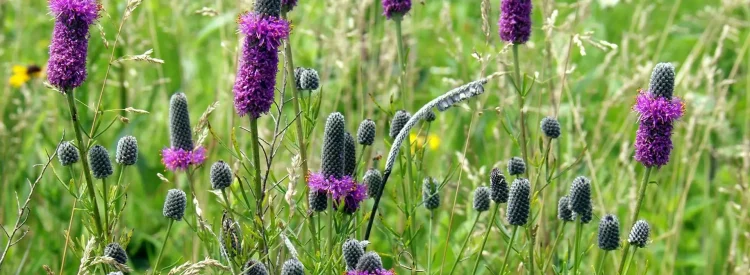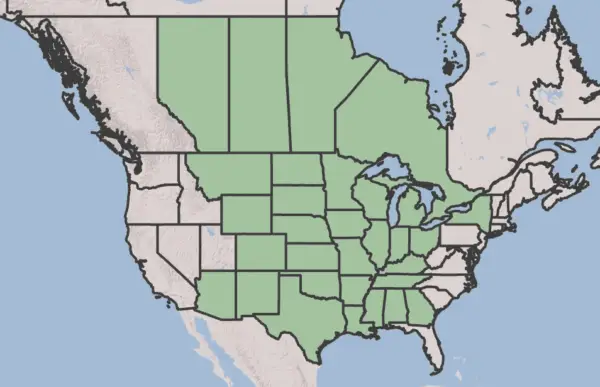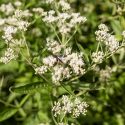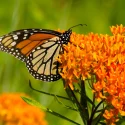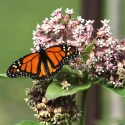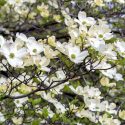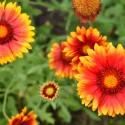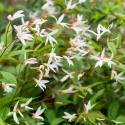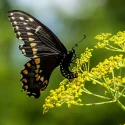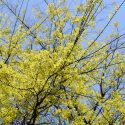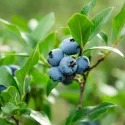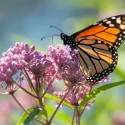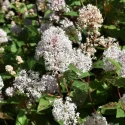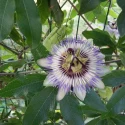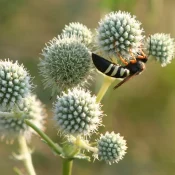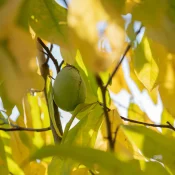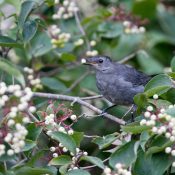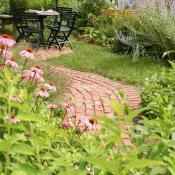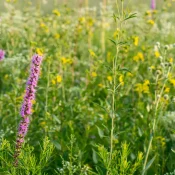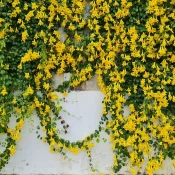The stunning sculpture-like flowers of Purple Prairie Clover are beautiful to look at, and the shape gives pollinators lots of space to eat and rest. Best when planted in groups, they are also host plants for sulphur butterflies. Their roots are deep, helping them to withstand drought (but making transplant difficult). Plant them by seed in full sun, and enjoy them for years.
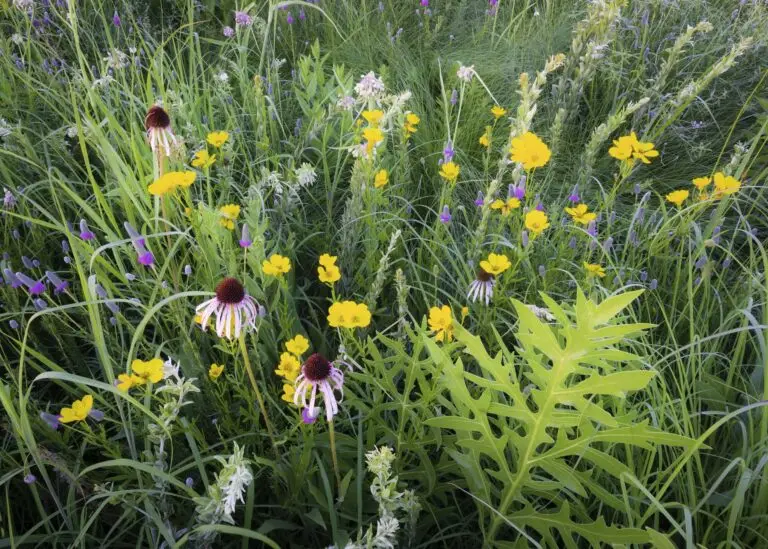
Purple Prairie Clover is a stunning native flower that thrives in full sun and can handle drought once established. They are easy to grow by seed and look amazing, especially when paired with other native flowers.
Purple Prairie Clovers also fix nitrogen in the soil
Without getting too nerdy…there are lots of nutrients in our water, sun, and soil. One nutrient that helps fertilize plants is nitrogen.
Nitrogen is all around us, mostly in the air. Interestingly, very few plants can actually take nitrogen from the air and make it usable!
There are a few plants that have evolved to move nitrogen from the air to a usable form for plants, thanks to symbiotic relationships with bacteria that live in the roots called rhizobia. These plants give the rhizobia sugar to eat, and in return, the rhizobia converts nitrogen gas to a form the plant can use. When a plant can do this, it’s called a nitrogen-fixing plant.
Purple Prairie Clover is one of these nitrogen-fixing marvels. Another cool thing about nitrogen-fixing is that it benefits the plant itself and what’s nearby. Whenever you plant Purple Prairie Clover, the plant is giving nitrogen fertilizer to itself and all the plants around it. These are very beautiful and generous plants.
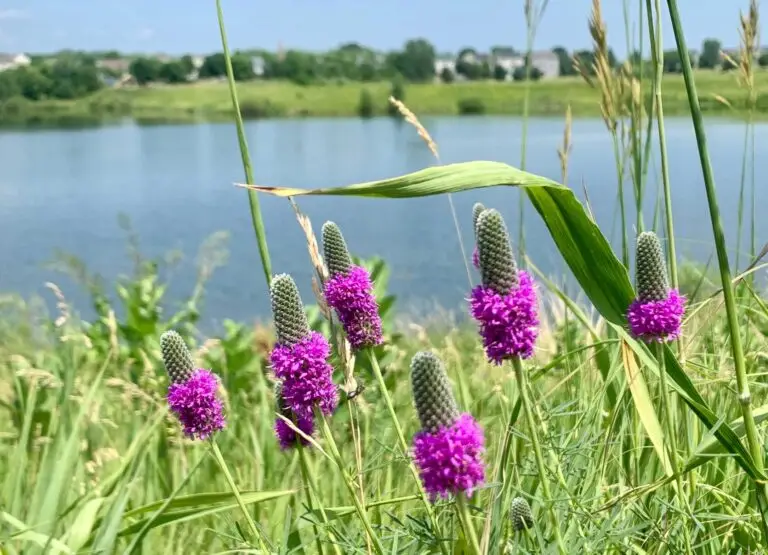
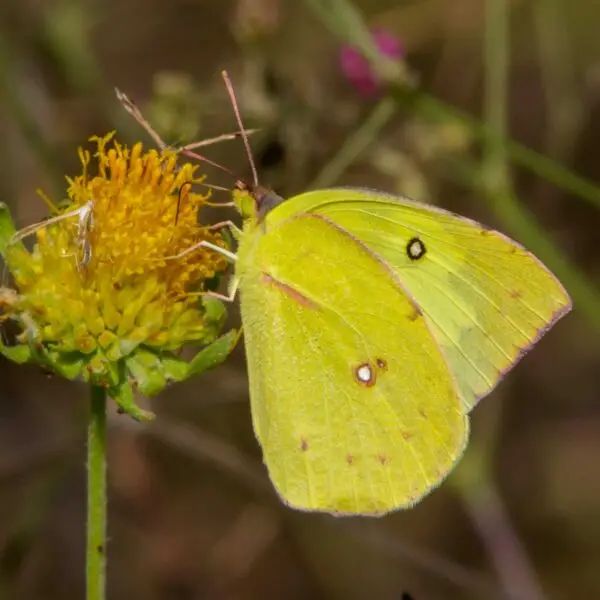
Purple Prairie Clovers are host plants for the Southern Dogface butterfly
Some plants have evolved to have very special relationships with the animal world. For example, some plants are the only places where butterfly moms will lay their eggs—these are called host plants.
If you needed another reason to plant Purple Prairie Clover, here you go. These flowers are also the host plant for the beautiful (but strangely named) Southern Dogface butterfly. This bright yellow creature depends on this plant to survive.
Now that we’ve talked about the benefits of growing Purple Prairie Clover, let’s talk about how to grow and where to find this native plant.
How to grow Purple Prairie Clover
Because this plant has a long root system, it’s difficult to transplant from plants. Instead, go the cheap and easy route and grow Purple Prairie Clover by seed. This ensures the plant grows its roots exactly where you want them: in your garden.
Seeds = affordability + patience
The only bad news about planting by seed is that it can take two years for the plant to flower. (In the first year, it spends its energy making its long root system.)
The good news about planting by seed and being patient is that once those roots are there, this plant is exceptionally drought-tolerant and will come back, year after year. A little patience is definitely worth it!
For $6, you can plant a garden full of Purple Prairie Flowers. Find seeds here:
- Prairie Nursery, 1/4 ounce of seeds for $6
Is Purple Prairie Clover a perennial?
Yes, Purple Prairie Clover is a perennial. The plant will come back, year after year, after being planted once.
Does Purple Prairie Clover spread?
This native plant does a good job of not taking over gardens—it does not spread aggressively. If you are concerned about it reseeding in your garden, cut the seed tops off in the fall.

What are good pairings for Purple Prairie Clover?
There are lots of other full-sun native flowers that look great with this plant, like Black-Eyed Susan and Butterfly Weed (an orange-flowered milkweed).
Another way to plan a garden is to ensure that something is always blooming, from spring through to the fall. Here are some great pairings with seasonality in mind:
Native flowers for spring
Other native plants for the summer
Native plants for fall
Another way to plan a garden is to pick by color. Our three-color gardening guide is a great way to quickly make native plant decisions and bring cohesion to your landscape.
In conclusion, Purple Prairie Clover is one of those native plants whose shape stands alone—much like Rattlesnake Master or one of the 75 species of goldenrod. Their singular flowers look amazing in full sun gardens, especially when paired with other drought-resistant sun-lovers. Because they are native, they are happy with minimal care and will come back year after year needing only rain. Plant them by seed (since their long roots make them difficult to transplant) and give seedheads away in the fall, so your neighbors can plant some, too. Happy planting!
Sources
- United States Department of Agriculture, Purple Prairie Clover
- Pyle, Robert Michael. Gardening for Butterflies: How You Can Attract and Protect Beautiful, Beneficial Insects. (2016), 137.
What if your feed was actually good for your mental health?
Give your algorithm a breath of fresh air and follow us.
